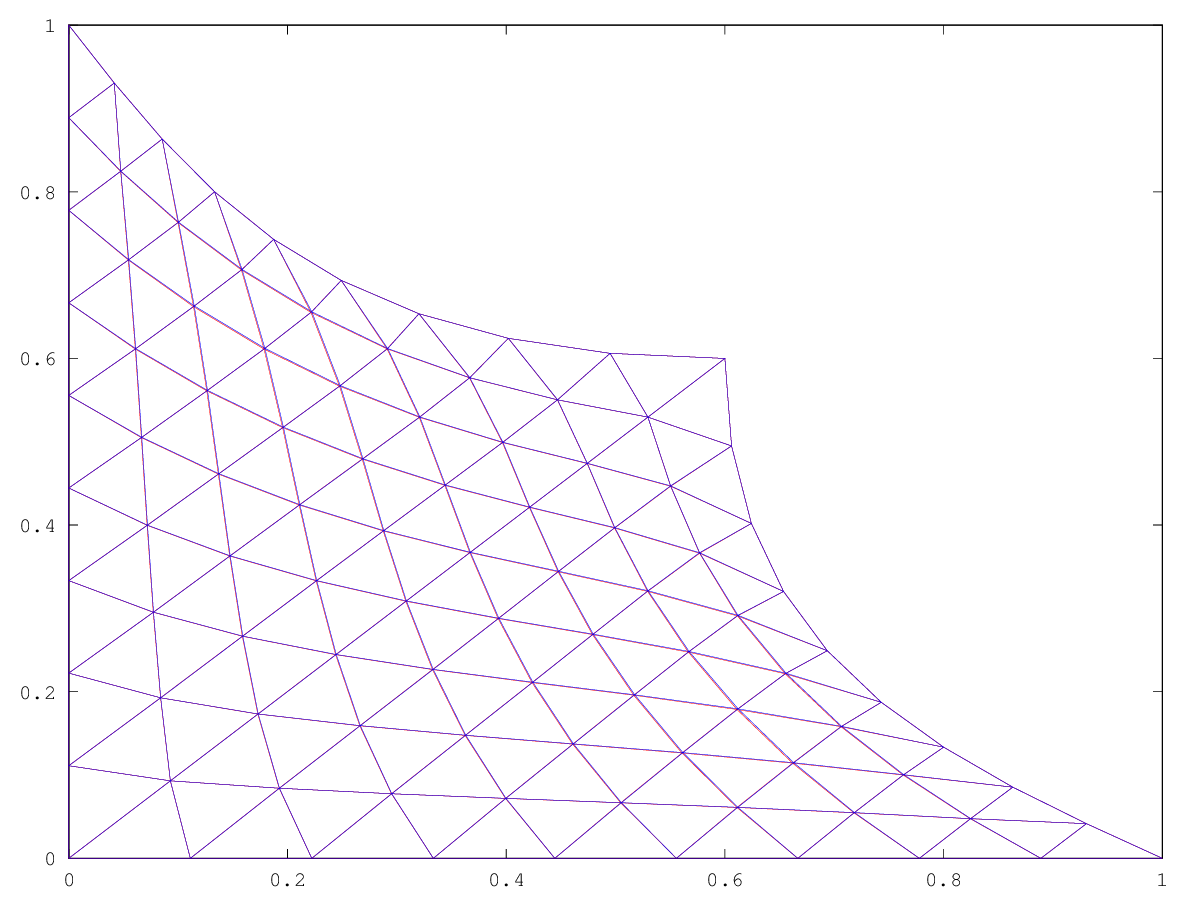
|
Octave-Forge - Extra packages for GNU Octave |
| Home · Packages · Developers · Documentation · FAQ · Bugs · Mailing Lists · Links · Code |
Function File: [newmsh] = msh2m_jiggle_mesh(msh,steps)
Equalize the size of triangle edges setting a spring of rest length factor*area along each edge of the mesh and solving for static equilibrium.
The non-linear eqautions of the system obtained are solved via a non-linear Gauss-Seidel method. step is the number of steps of the method to be applied.
May be useful when distorting a mesh, type
demo msh2m_jiggle_meshto see some examples.See also: msh2m_displacement_smoothing, msh2m_equalize_mesh.
The following code
### distort a mesh on a square equalizing at each step
msh = msh2m_structured_mesh(linspace(0,1,10),linspace(0,1,10),1,1:4,"right");
dnodes = msh2m_nodes_on_sides(msh,1:4);
varnodes = setdiff([1:columns(msh.p)],dnodes);
x = msh.p(1,:)';
y = msh.p(2,:)';
dx = dy = zeros(columns(msh.p),1);
dytot = dxtot = -.4*sin(x(dnodes).*y(dnodes)*pi/2);
Nsteps = 30;
for ii=1:Nsteps
dx(dnodes) = dxtot;
dy(dnodes) = dytot;
[Ax,Ay] = msh2m_displacement_smoothing(msh,1);
dx(varnodes) = Ax(varnodes,varnodes) \ ...
(-Ax(varnodes,dnodes)*dx(dnodes));
dy(varnodes) = Ay(varnodes,varnodes) \ ...
(-Ay(varnodes,dnodes)*dy(dnodes));
msh.p(1,:) += dx'/Nsteps;
msh.p(2,:) += dy'/Nsteps;
triplot(msh.t(1:3,:)',msh.p(1,:)',msh.p(2,:)','r');
pause(.5)
x = msh.p(1,:)';
y = msh.p(2,:)';
msh = msh2m_jiggle_mesh(msh,10);
hold on;
triplot(msh.t(1:3,:)',msh.p(1,:)',msh.p(2,:)');
hold off;
pause(.5)
endfor
Produces the following figure
| Figure 1 |
|---|
 |
Package: msh